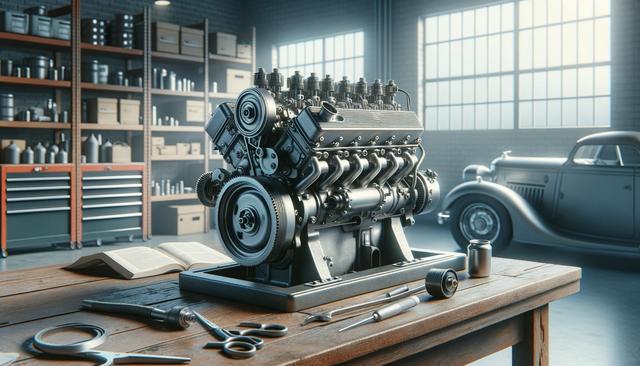Understanding the Value of Low Mileage Used Engines
When considering engine replacement, low mileage used engines stand out as a cost-effective and reliable option. These engines, often sourced from vehicles that were either involved in accidents or retired early for reasons unrelated to engine health, typically have less wear and tear. This means the internal components—such as pistons, bearings, and camshafts—are in better condition compared to high mileage alternatives. As a result, buyers can benefit from both longevity and performance at a fraction of the cost of a new engine.
Purchasing a low mileage used engine can also reduce the environmental impact of vehicle maintenance. Reusing functional parts extends the life cycle of engines and minimizes waste. This sustainable approach not only conserves resources, but also supports a circular economy in the automotive industry. For budget-conscious or eco-aware consumers, it’s a win-win scenario.
Key Benefits of Choosing a Low Mileage Replacement
There are several advantages to selecting a low mileage used engine over other options. These benefits are not just financial, but also practical and environmental. Here are some of the most compelling reasons:
- Lower cost compared to a new or remanufactured engine
- Reduced risk of mechanical failure due to less overall usage
- Faster availability and installation timelines
- Potential for warranty or certification from reputable sellers
Moreover, low mileage engines often come with documented history, providing peace of mind for the buyer. This history might include service records, accident reports, or inspection documentation, all of which can help ensure that the engine has been properly maintained prior to resale.
What Counts as ‘Low Mileage’?
Understanding what qualifies as low mileage is essential when shopping for a used engine. Typically, an engine that has been driven for fewer than 60,000 miles is considered low mileage, though this can vary depending on the make and model of the vehicle. It’s also important to consider the age of the engine and how it was used—city driving, for example, may result in more wear than highway driving for the same number of miles.
Buyers should also be aware of the following factors when assessing mileage:
- Vehicle usage type (commercial, personal, etc.)
- Maintenance frequency and quality
- Storage conditions (climate, exposure to elements)
Taking these aspects into account can help ensure a more informed purchase and reduce the likelihood of unexpected repairs or issues down the road.
Where to Find Reliable Low Mileage Used Engines
Finding a dependable source is key to purchasing a quality low mileage used engine. Reputable auto salvage yards, certified resellers, and online marketplaces with verified sellers are all viable starting points. When choosing a vendor, it’s important to look for transparency, customer reviews, and detailed product descriptions that include engine codes, mileage verification, and condition reports.
Before making a purchase, consider the following steps:
- Request a full engine inspection report
- Verify mileage through documentation or vehicle history reports
- Ask about warranties or return policies
- Consult with a trusted mechanic for professional advice
These steps can help avoid common pitfalls and ensure that the engine you select meets your performance and reliability expectations.
Installation and Maintenance Considerations
Once you’ve acquired a low mileage used engine, proper installation and maintenance are critical to getting the most out of your investment. Professional installation is highly recommended, as it ensures that the engine is correctly integrated into your vehicle’s systems. A skilled mechanic can also identify and replace any worn components that may not be part of the used engine, such as belts, hoses, or gaskets.
After installation, maintaining the engine is crucial for long-term performance. This includes:
- Regular oil changes and fluid checks
- Monitoring for leaks or unusual noises
- Following manufacturer-recommended service intervals
- Using high-quality replacement parts and fluids
By staying proactive with maintenance, you can help ensure that your low mileage used engine delivers reliable service for many miles to come.
Conclusion: A Practical Choice for Vehicle Longevity
For drivers seeking a cost-effective and dependable way to extend the life of their vehicle, low mileage used engines present a compelling option. By understanding what qualifies as low mileage, knowing where to shop, and ensuring proper installation and upkeep, buyers can make an informed decision that balances performance, price, and sustainability. Whether you’re dealing with a sudden engine failure or planning a long-term vehicle upgrade, this choice can offer significant value without compromising reliability.







